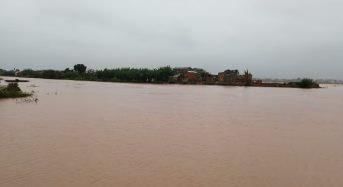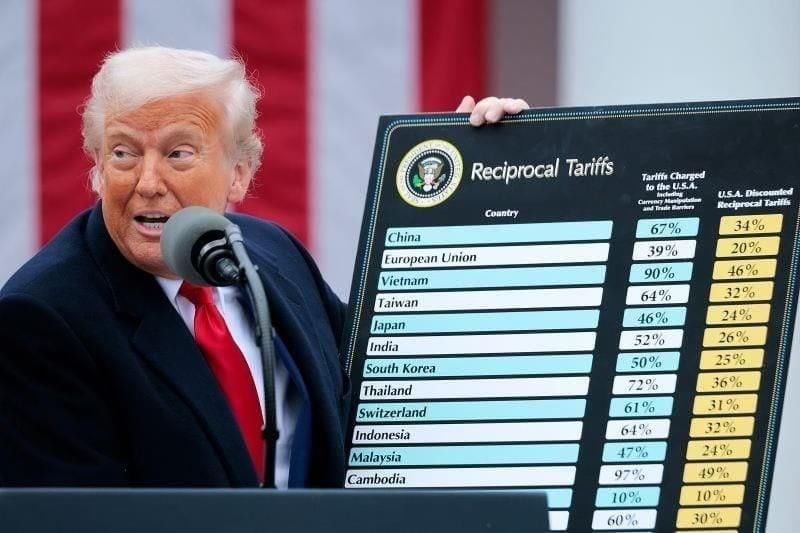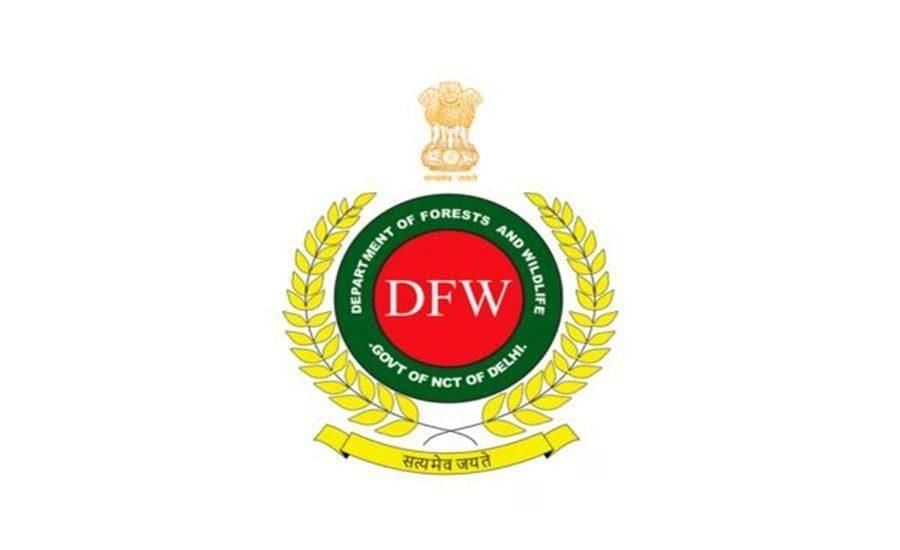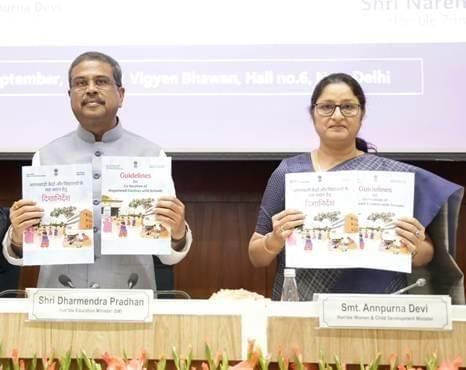Weekly Current Affairs (1st to 7th September 2025) | General Test Preparation for CUET UG - CUET Commerce PDF Download
Ghaggar River Flood Risks and Management in Punjab
 Why in News?
Why in News?
On September 1, 2025, heavy rainfall and the opening of floodgates at Sukhna Lake have caused the Ghaggar River in Punjab to exceed danger levels, triggering alerts in the Mohali and Patiala districts. Although the situation is reported to be under control, the river has overflowed, affecting several villages. The Ghaggar, a significant rainfed river, presents ongoing flood risks in the Malwa region of Punjab due to its seasonal nature and the absence of major storage infrastructure. Understanding the river's characteristics, tributaries, and the challenges of flood management is crucial for preventing future disasters.
Key Takeaways
- The Ghaggar River is Punjab's largest rainfed river.
- It originates in the Shivalik foothills and flows through Haryana before entering Punjab.
- The river is seasonal, primarily dry outside of the monsoon season.
- It has a wide catchment area that causes sudden surges during heavy rains.
- The river eventually disappears into the Thar Desert along the ancient Hakra channel.
Additional Details
- Flooding and Vulnerability: Known as Malwa’s "river of sorrow," the Ghaggar frequently causes flooding. Sudden water level increases can inundate fields and villages, leading to crop damage and infrastructure disruption. Floods have displaced thousands and disrupted the livelihoods of many. The river's shallow channels can easily be overwhelmed by intense rainfall upstream, exacerbated by encroachments, silt buildup, and weak embankments. Historical floods in 1988, 1993, 2008, 2019, and 2023 highlight the persistent threat to the region.
- Tributaries and Hydrology: The Ghaggar is fed by several seasonal tributaries from the Shivalik hills, including Kaushalya Nadi, Tangri, and Markanda. These streams can swell rapidly during heavy rainfall, increasing the river's discharge and flood risk downstream. For example, the Kaushalya Nadi joins the Ghaggar near Pinjore and is managed by the Kaushalya Dam, the only significant flood-control structure in the basin.
- Flood Management Challenges: Unlike perennial rivers such as the Sutlej, Ravi, and Beas, the Ghaggar lacks major dams, limiting its flood regulation and water storage capabilities. Flood control primarily depends on smaller embankments and bundhs, which are often inadequate. Quick responses are necessary due to rapid water level rises, making encroachment removal and embankment strengthening vital for reducing flood impacts.
Effective management of the Ghaggar River is essential to safeguard vulnerable communities in Punjab's Malwa region from future flood disasters.
US Court Limits Presidential Tariff Powers Under IEEPA
 Why in News?
Why in News?
Recent developments in the United States have raised questions about the extent of presidential authority to impose tariffs under emergency powers. On August 29, 2025, the US Court of Appeals for the Federal Circuit ruled 7-4 that several tariff announcements made by President Donald Trump were illegal. The court found that the President lacks broad authority to impose tariffs under the International Emergency Economic Powers Act (IEEPA) of 1977. This ruling upheld a previous decision by a Manhattan Trade Court but has been stayed until October while an appeal to the Supreme Court is pending. This case highlights the ongoing tensions between executive power and legislative oversight in trade policy.
Key Takeaways
- The Federal Circuit ruled that the President cannot impose tariffs under IEEPA without Congressional approval.
- This ruling could reshape the balance of power between the executive branch and Congress regarding trade policy.
- The decision has been stayed pending a Supreme Court appeal.
Additional Details
- International Emergency Economic Powers Act (IEEPA): Enacted in 1977, the IEEPA gives the US President the authority to declare a national emergency and impose sanctions in response to unusual threats from abroad that affect national security, foreign policy, or the economy. Historically, presidents have utilized this act to impose sanctions during significant crises, such as the Iran hostage crisis and post-September 11.
- Trump’s Use of Emergency Powers: President Trump invoked IEEPA multiple times to justify tariffs aimed at reducing the US trade deficit, imposing significant tariffs on imports from various countries under claims of national emergency due to unfair trade practices.
- Legal challenges from small businesses and states argued that these tariffs were economically harmful and exceeded presidential authority, leading to court rulings against their legality.
- The court decisions do not affect tariffs imposed under other trade laws, such as Section 232 of the Trade Expansion Act of 1962, which allows for tariffs based on national security investigations.
These court rulings serve as a significant check on the executive branch's ability to unilaterally impose economic measures under the guise of emergency powers, reinforcing the need for clear legal backing and Congressional oversight in trade matters. The outcomes may influence future US trade policies and the dynamics of power between the President and Congress.
India-US Joint Military Exercise Yudh Abhyas 2025
 Why in News?
Why in News?
The 21st edition of the India–USA joint military exercise, Yudh Abhyas 2025, has commenced at Fort Wainwright, Alaska, running from September 1 to 14, 2025. This exercise involves the Madras Regiment of the Indian Army and the US 1st Battalion, 5th Infantry Regiment, known as the Bobcats of the Arctic Wolves Brigade Combat Team, 11th Airborne Division. Despite ongoing bilateral trade tensions, this exercise exemplifies the enduring strategic defence partnership between India and the US.
Key Takeaways
- Yudh Abhyas is one of the largest joint military exercises between India and the US.
- This year’s edition emphasizes integrated warfare tactics and high-altitude operations.
- The event includes training in heliborne operations, mountain warfare, casualty evacuation, and combat medical aid.
- Focus on the combined use of artillery, aviation, and electronic warfare systems to enhance operational synergy.
Additional Details
- Tactical Drills: Troops will rehearse various tactical drills, including the deployment of unmanned aerial systems (UAS) for surveillance and counter-UAS operations. Live-fire drills and complex maneuvers will simulate high-altitude warfare conditions, aimed at improving combat readiness for multi-domain challenges and United Nations peacekeeping missions.
- Role of Subject-Matter Experts: Experts from both armies will conduct working groups focusing on critical areas such as information warfare, communications, logistics, and electronic warfare. These sessions will promote knowledge exchange and the development of joint strategies for emerging military technologies and battlefield scenarios.
- Strategic Context: The exercise is taking place amidst trade conflicts, including a 50% tariff imposed by the US on Indian goods under the previous administration. While these tensions have affected economic relations, defense ties remain strong, highlighting a strategic partnership prioritizing security cooperation.
In conclusion, Yudh Abhyas 2025 plays a crucial role in strengthening interoperability between the Indian and US armies. It enhances their readiness for joint operations in varied environments, including extreme cold and mountainous terrains, and reinforces India's capacity to contribute to global peacekeeping efforts and respond to multi-domain security threats.
Semicon India 2025
 Why in News?
Why in News?
On September 2, 2025, Prime Minister Narendra Modi inaugurated Semicon India 2025 at Yashobhoomi, New Delhi. This significant event marks a pivotal moment for India's semiconductor sector, bringing together over 20,750 participants, including 2,500 delegates from 48 countries, to explore India's expanding role in the global semiconductor design and manufacturing landscape.
Key Takeaways
- Semicon India 2025 aims to foster a sustainable semiconductor ecosystem.
- Key topics include semiconductor fabrication, advanced packaging, and AI integration.
- Focus on state-level policies and international collaboration to enhance industry growth.
Additional Details
- Prime Minister's Vision: Modi envisions India as a global hub for semiconductor technology, marking the 'Perform' phase of the national initiative to scale semiconductor projects across the nation.
- Infrastructure Projects: Recent approvals for four new semiconductor facilities emphasize packaging and advanced technologies, with significant projects in Gujarat and Assam.
- Policy Initiatives: The Production Linked Incentive (PLI) scheme aims to expand MSME participation, while the Design Linked Incentive (DLI) scheme fosters innovation and design capabilities.
- International Engagement: The event featured country roundtables and insights from over 50 global technology leaders, highlighting India's importance in the global semiconductor sector.
Overall, Semicon India 2025 represents a crucial step in establishing India as a leader in the semiconductor industry, emphasizing innovation, collaboration, and policy support to drive future growth.
Bihar Rajya Jeevika Nidhi
Why in News?
The Government of India, along with the Bihar state government, has made a significant advancement in empowering rural women entrepreneurs. On September 2, 2025, Prime Minister Narendra Modi launched the Bihar Rajya Jeevika Nidhi Saakh Sahkari Sangh Limited via video conferencing, marking a pivotal moment in financial support for women in rural areas.
Key Takeaways
- The initiative involves a fund transfer of Rs. 105 crore to support women associated with Jeevika self-help groups.
- The aim is to provide affordable financial assistance, reducing reliance on high-interest microfinance loans.
- Approximately 20 lakh women are expected to benefit from this initiative, fostering entrepreneurship across Bihar.
Additional Details
- Purpose of Bihar Rajya Jeevika Nidhi: This fund is designed to facilitate easy access to low-interest loans for women entrepreneurs linked to registered cluster-level federations under Jeevika. Historically, these women faced interest rates as high as 18% to 24% from microfinance institutions.
- Funding and Digital Operations: The Jeevika Nidhi receives financial contributions from both the Bihar state and central governments. Utilizing a fully digital platform, fund transfers are made directly to the bank accounts of Jeevika Didis, ensuring transparency and efficiency.
- The establishment of this initiative is supported by training 12,000 community cadres with tablets to aid in digital operations and monitoring.
- Impact on Women Entrepreneurship: The initiative is anticipated to bolster entrepreneurship among approximately 20 lakh women in Bihar, significantly reducing their dependence on exploitative lenders and promoting sustainable business development.
This strategic initiative not only aims to empower women through financial inclusion but also to stimulate the growth of community-led enterprises, paving the way for a more sustainable economic future in rural Bihar.
Urban Noise Pollution Crisis in Indian Cities
 Why in News?
Why in News?
As of 2025, urban noise pollution has escalated into a critical and often overlooked public health concern in Indian cities. Noise levels consistently exceed legal limits, especially in proximity to schools, hospitals, and residential areas. Monitoring efforts exist, yet enforcement remains ineffective. The implications of noise pollution extend to mental health, ecological stability, and fundamental constitutional rights.
Key Takeaways
- Noise pollution is a significant public health issue affecting urban populations.
- Current monitoring systems are inadequate and enforcement of noise regulations is weak.
- Noise pollution has adverse effects on both ecological systems and human health.
- Public awareness and cultural changes are crucial for addressing the issue.
Additional Details
- Current Monitoring and Enforcement Challenges: The Central Pollution Control Board (CPCB) initiated the National Ambient Noise Monitoring Network (NANMN) in 2011 to provide real-time noise data. However, it mostly serves as a passive repository of information. Sensor installations often disregard guidelines, leading to inaccurate data. State Pollution Control Boards operate independently and do not adequately respond to public inquiries, resulting in incomplete and politically stagnant noise data.
- Legal Framework: The Noise Pollution (Regulation and Control) Rules, 2000 establish the legal framework for noise regulation. The World Health Organization recommends noise limits of 50 dB(A) during the day and 40 dB(A) at night in sensitive areas, limits that are frequently surpassed in Indian cities. The Supreme Court underscored in 2024 that excessive noise breaches Article 21, which guarantees the right to life and dignity.
- Health and Ecological Impacts: A 2025 study by the University of Auckland highlighted that urban noise disrupts wildlife communication and behavior, notably affecting common mynas. For humans, noise pollution adversely impacts mental health, sleep quality, and overall well-being, with children and the elderly being particularly vulnerable.
- Policy Recommendations: A national acoustic policy is essential to establish clear decibel limits and enforce them effectively. Enhancements in coordination among municipal authorities, traffic police, and pollution control boards are necessary. Public awareness initiatives should foster a culture of ‘sonic empathy’ and urban planning must incorporate acoustic resilience to create healthier living environments.
In conclusion, addressing urban noise pollution requires a multifaceted approach that includes legal enforcement, public engagement, and cultural shifts to ensure the well-being of all urban residents.
Delhi Forest Department Clarifies Legal Tree Definition
 Why in News?
Why in News?
The Delhi Forest Department has recently issued a circular to clarify the legal definition of a "tree" as outlined in the Delhi Preservation of Trees Act (DPTA), 1994. This initiative seeks to address confusion surrounding tree counting and management, particularly during pruning and conservation efforts. The clarification follows disputes with environmental activists regarding tree counting methods, where branches were erroneously counted as individual trees.
Key Takeaways
- The DPTA, 1994, defines a tree as a woody plant with a trunk of at least five centimeters in diameter and a minimum height of one meter.
- The circular specifies that branches or shoots emerging from the soil cannot be counted as separate trees.
- This clarification aims to improve the accuracy of tree data and enhance urban forest management.
Additional Details
- Legal Definition of a Tree: According to Section 2(i) of the DPTA, 1994, a tree must have a trunk that is at least five centimeters in diameter, measured thirty centimeters above ground level, and must be at least one meter tall. This definition is crucial for uniformity in tree identification and protection.
- Counting Trees: The circular emphasizes that only distinct trunks meeting the established criteria should be counted. This prevents the miscounting of species like kikar and babool, which can have multiple basal branches.
- Significance for Pruning Practices: Pruning involves the removal of weak or dangerous branches to ensure safety along public spaces. The standard operating procedure allows for such removals to foster healthy growth and support local fauna, while clarifying that pruning should not be confused with tree felling.
- Impact: The clarification ensures that all forest officials apply the DPTA provisions consistently, reducing the risk of legal complications or public misunderstandings.
This initiative by the Delhi Forest Department aims to enhance data accuracy, promote better urban forest management, and maintain ecological balance in the capital.
APEDA Launches BHARATI To Boost Agri-Food Exports

Why in News?
The Agricultural and Processed Food Products Export Development Authority (APEDA) has launched an initiative named BHARATI in September 2025. This program is designed to empower 100 startups in the agri-food and agri-tech sectors, aiming to foster innovation and create new export opportunities as India sets its sights on achieving $50 billion in agri-food exports by the year 2030.
Key Takeaways
- BHARATI: Stands for Bharat’s Hub for Agritech, Resilience, Advancement and Incubation for Export Enablement.
- The initiative focuses on startup growth in agriculture and food processing.
- It aims to enhance export readiness and improve market access.
Additional Details
- Focus Areas and Technologies:
- Targets high-value agri-food products such as GI-tagged items, organic foods, and superfoods.
- Promotes technologies like AI-based quality control, blockchain traceability, and IoT-enabled cold chains.
- Export Challenges: Addresses product development, quality assurance, and logistics issues to enhance export competitiveness.
- The initiative aligns with key national policies such as Atmanirbhar Bharat and Digital India.
The pilot phase of BHARATI commenced in September 2025 with a selection of 100 startups. This initiative not only aims to drive continuous innovation but also seeks to position India as a competitive player in the global agri-food trade by harnessing youth entrepreneurship and stimulating demand-driven food innovation.
Guidelines for Co-Location of Anganwadi Centres with Schools
 Why in News?
Why in News?
The Government of India has unveiled comprehensive guidelines aimed at co-locating Anganwadi Centres (AWCs) alongside schools. This initiative is designed to bolster Early Childhood Care and Education (ECCE) by merging pre-school education with formal schooling, thereby supporting the vision of a developed India through enhanced care and learning for young children. This move is in alignment with the National Education Policy (NEP) 2020 and the 'NIPUN Bharat' mission, which focuses on improving foundational literacy and numeracy.
Key Takeaways
- The initiative targets approximately 15 crore children, focusing on their health, nutrition, and education from early stages.
- It aims to facilitate a smooth transition from Anganwadi to Grade 1, improving retention and learning outcomes.
- Digital connectivity and the implementation of AI tools to support teaching in Indian languages are integral to this plan.
Additional Details
- Integration with NEP 2020: NEP 2020 identifies ECCE as the foundation for lifelong learning, integrating three years of pre-school into the 5+3+3+4 education structure. The policy mandates ECCE delivery through various formats, including standalone AWCs, co-located AWCs, and pre-primary sections in schools.
- Objectives of the Co-Location Guidelines:The guidelines have several key objectives, including:
- Ensuring a smooth preparation of children for formal schooling.
- Linking Anganwadi Centres and primary schools to foster joyful learning.
- Enhancing child retention rates at the primary level.
- Promoting holistic development through care, health, and education.
- Encouraging community participation and optimizing resources.
- Implementation Challenges: Given the diverse models followed by states and Union Territories for Anganwadi functioning, these guidelines address operational challenges and emphasize the importance of timely collaboration between education and women & child development departments to strengthen ECCE and foundational learning nationwide.
- Technology and Learning Tools: The initiative advocates for the use of innovative teaching-learning materials, like Jaadui Pitara and e-Jaadui Pitara, which align with the National Curriculum Framework for the foundational stage and NEP 2020. Enhanced broadband connectivity in schools is expected to support digital education and AI-based learning, thereby making education more accessible and effective.
In conclusion, the co-location of Anganwadi Centres with schools represents a significant step towards integrating early childhood education with formal schooling, ultimately aiming to improve educational outcomes and developmental support for young children across India.
Israel Launches Ofek-19 Military Satellite

Why in News?
The launch of Israel's Ofek-19 satellite on September 2, 2025, represents a significant advancement in the nation's intelligence and defense capabilities. This sophisticated reconnaissance satellite employs Synthetic Aperture Radar (SAR) technology, facilitating uninterrupted surveillance in any weather conditions, both day and night. It enhances Israel's autonomous space-based intelligence while bolstering security collaborations with allies, particularly the United States.
Key Takeaways
- Ofek-19 utilizes Synthetic Aperture Radar (SAR) for all-weather surveillance.
- It enhances Israel's ability to monitor military activities in neighboring countries.
- The satellite launch underscores Israel's independent satellite capabilities.
Additional Details
- Synthetic Aperture Radar (SAR): This technology transmits radar pulses to the ground and analyzes the reflected echoes to produce precise images. Unlike traditional optical satellites, SAR can function effectively through clouds, fog, and darkness, allowing for constant monitoring of hostile activities.
- Strategic Launch Details: The Ofek-19 satellite was launched from the Palmachim Airbase using the Shavit launcher, which provides Israel with control over the timing and secrecy of its satellite operations. The launch trajectory is designed to avoid populated or hostile areas.
- Enhanced Regional Security: Ofek-19 improves Israel's capability to track threats from nations like Iran and Syria, as well as groups such as Hezbollah, by delivering high-resolution imagery with accuracy better than half a meter.
- Future Developments: The Shavit launcher's operational era is concluding, with Israel developing a larger launcher for heavier satellites. Additionally, investments are being made in small satellite constellations to increase surveillance frequency.
The launch of Ofek-19 marks a pivotal moment for Israel's military and intelligence strategy, especially in light of recent regional conflicts. The Israeli Ministry of Defence plans substantial investments in a satellite constellation to ensure ongoing surveillance across the Middle East over the next decade.
|
201 videos|1016 docs|2274 tests
|
FAQs on Weekly Current Affairs (1st to 7th September 2025) - General Test Preparation for CUET UG - CUET Commerce
| 1. What are the primary flood risks associated with the Ghaggar River in Punjab? |  |
| 2. How can flood management be effectively implemented for the Ghaggar River in Punjab? |  |
| 3. What legal measures are in place to address flood-related issues in Punjab? |  |
| 4. How does urban noise pollution impact residents in Indian cities, including Punjab? |  |
| 5. What initiatives are being taken to enhance agricultural exports from India, particularly in Punjab? |  |





















